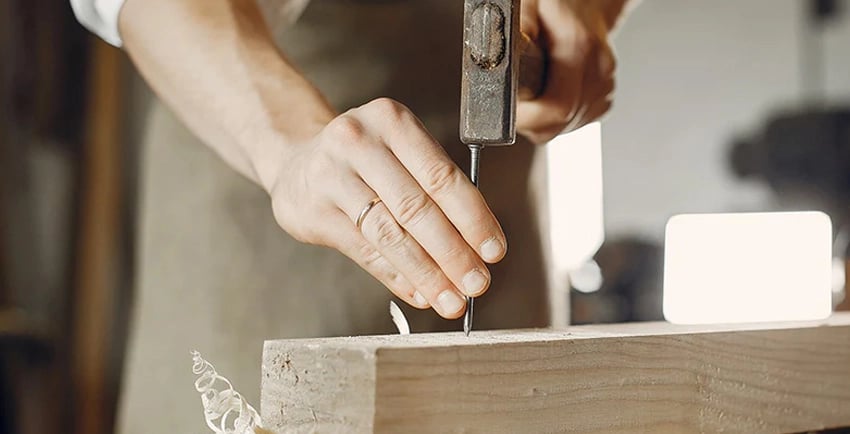The Choice and Significance of Eco-friendly Wood Linear Lights
7/22/20233 min read


In today's social context, the awakening of environmental consciousness is leading the global pursuit of sustainable development.
In the world of home decoration, eco-friendly wooden chandeliers, symbolizing green design concepts, are steadily gaining favor among those who desire to enjoy a high-quality lifestyle while also protecting the Earth, becoming a preferred solution for balancing life with nature.
This blog will thoroughly analyze the golden standards for choosing eco-friendly wooden chandeliers, their positive impact on the natural environment, and how each of us can contribute to laying the path for Earth's sustainable development in our daily decisions.
Sustainability of Wooden Chandeliers
Sustainability refers to meeting current needs without compromising the ability of future generations to meet their own needs. The sustainability of wooden chandeliers is evident in several aspects:
Renewable Resource: Wood is a renewable resource, and its sustainable use can be achieved through rational forest management and reforestation. Compared to non-renewable resources like metal and plastic, wood has better sustainability.
Low Energy Consumption in Production: The production process of wooden chandeliers is relatively simple and requires low energy consumption. Waste and byproducts generated during wood processing can be used as fuel or for other purposes, reducing resource waste.
Circular Reuse: If wooden chandeliers are damaged or become obsolete during use, they can be repaired or recycled for reuse. Wood can be reprocessed into other products, reducing the demand for new resources.
Selection Criteria for Eco-Friendly Wooden Chandelier
The choice of materials for wooden chandeliers has a significant impact on their sustainability and environmental performance. When selecting wood, consider the following factors:
Sustainable Supply: Choose wood from sustainably managed forests to ensure a continuous supply. Avoid using endangered tree species and protect biodiversity.
Processing Techniques: Select chandeliers made using low-pollution, low-energy production methods. For example, using natural plant oils as preservatives instead of chemical coatings to reduce harmful emissions.
Energy Efficiency: Integrate LED light bulbs, which have low energy consumption and long lifespans, significantly reducing the carbon footprint compared to traditional bulbs.
Local Sourcing: Try to choose locally sourced wood to reduce energy consumption and carbon emissions during transportation.
Low Formaldehyde Content: Choose wood with low formaldehyde content to reduce indoor air pollution. Use eco-friendly adhesives and paints to enhance the environmental performance of the wooden chandelier.
Contribution of Wooden Chandeliers to the Environment
The promotion and use of eco-friendly wooden chandeliers have several positive environmental impacts:
Reducing Forest Destruction: By supporting sustainable forestry, encouraging responsible harvesting and replanting, and protecting biodiversity, the chandeliers help maintain ecological balance.
Lowering Carbon Emissions: Reducing reliance on fossil fuels at the source, the high efficiency of LED light bulbs reduces energy consumption and indirectly reduces greenhouse gas emissions.
Promoting the Circular Economy: The recyclable design of the chandeliers reduces waste and increases the recycling rate of resources, slowing the depletion of resources.
Improving Indoor Air Quality: Natural wood emits phytoncides, a natural antimicrobial substance, which helps purify the air and create a healthier living environment.
Practicing Environmental Protection
As consumers, when we choose eco-friendly wooden chandeliers, we are actually contributing to sustainable development.
Before purchasing, understand the product information and prioritize brands and products with environmental certifications, such as FSC-certified wooden products. Although eco-friendly products may have a higher initial investment, considering their long-lasting durability and energy efficiency, they are more cost-effective in the long run.
Try to reduce unnecessary consumption by choosing classic, durable designs and avoiding frequent replacement to minimize resource consumption. We can also share the benefits of eco-friendly wooden chandeliers through social media, family gatherings, or other means to inspire more people's environmental awareness.
Conclusion
Wooden chandeliers, as a type of home lighting product with sustainability and eco-friendly concepts, have garnered widespread attention and affection.
As part of home decoration, they are not just tools for lighting but also ambassadors for driving the process of sustainable development.
By choosing appropriate materials, adopting efficient production processes, and focusing on quality control, wooden chandeliers can provide people with a comfortable and healthy lighting environment while reducing the negative impact on the environment.
In the future, with further improvement in people's environmental awareness, the role of wooden chandeliers in the field of home lighting will become increasingly important.
We should actively promote the sustainability and eco-friendly concepts of wooden chandeliers to contribute to building a beautiful home and achieving sustainable development.
